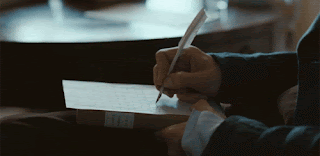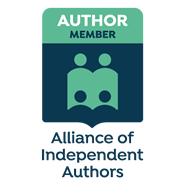2019 - in Words &
Pictures
 Unlike many years
past, 2019 was a surprisingly shameless year, not so much because of the shocking
and sometimes, inhuman things that happened. But because most of them played out in the streets and on live television and in blatant social media meltdowns.
Unlike many years
past, 2019 was a surprisingly shameless year, not so much because of the shocking
and sometimes, inhuman things that happened. But because most of them played out in the streets and on live television and in blatant social media meltdowns.
2019 was the year that uncanny chain of events shoved the world to the brink, from deadliest natural disasters to wars & rumors of wars, to election chaos, to senseless trade wars, to fake news, and to the Brexit madness. It was a year that one could only count the positives on the fingers of one hand. Yet, beyond
the turmoil, there were triumphs, like, for example, the U.S. Women
World Cup win, and the huge number of women and minorities elected to the
U.S. Congress which led to a spectacular takeover of the House of Representatives
by Democrats.
And the election of Nancy Pelosi, the first female speaker of the House, the most powerful woman in Washington D.C. For some, though the positive aspect ended there, for the win set the stage for a clash over congressional oversight powers. In the course of the year, the Robert Muller investigation into Russia's meddling in the 2016 elections came to an end with no satisfactory outcome for either side. Though Trump was not indicted for Obstruction of Justice, he was not outright exonerated, and some of his close associates went to jail.
Immigration was a thorny issue. Children were separated from their parents, with some held in what many described as cages. The dire situation led to one of the most haunting pictures of the year—an image of the lifeless bodies of Óscar Alberto Martinez Ramirez, his arm limply draped over his 23-month-old daughter, Angie Valeria, locked together on the banks of Rio Grande where they drowned trying to cross from Mexico into the United States.
In Britain, Prime Minister Theresa May bungled her way out of N° 10 Downing Street in tears over her headstrong and incompetent handling of the Brexit drama. On the other hand, her counterpart in the Labour Party, Jeremy Corbyn didn't fare any better. With no clear position on Brexit, and anti-semitic charges dogging his step, he sleepwalked into a national election on Brexit and spectacularly lost to Boris Johnson. He wasn't the only loser in Europe. The
vice-chancellor of Austria, Heinz-Christian Strache got entangled in a political scandal known as the Ibiza Affair and bowed out in disgrace. In Italy, the far-right Interior Minister, Matteo Salvini shot himself in the foot in a poorly orchestrated palace coup that ended up toppling him. Next door in France, the Yellow Vest's anti-government protests shook the political establishment and put the President, Emmanuel Macron on notice. In Asia, while the unyielding humanitarian crisis raged on in Yemen, protesters poured onto the wide boulevards of Hong Kong week after week. A subway fare increase in Chile led to protests in Santiago, and the tumult of mass gatherings, from Algeria to Sudan, from Bolivia to Venezuela, produced some of the most powerful images of the year.
January: Women wielded power in the U.S. Congress
February: Nancy Pelosi's clap at the State of the Union went viral
March: A terrorist attack hit New Zealand
April: In Paris, the Notre Dame Cathedral went up in flames
May: Attorney General William Barr's congressional testimony set the stage for a confrontation
June: President Trump made history by crossing the demilitarized zone into North Korea
July: The U.S. Women soccer team clinched the World Cup
August: A horde of U.S. Democratic presidential hopefuls staggered into the open
September: Wildfires devastate the Amazon as Hurricane Dorian hit the Bahamas
October: ISIS kingpin, Abu Bakr al-Baghdadi was killed in Syria by U.S. special forces
November: The Chinese principle of one country, two systems tested its consistency in Hong Kong
December: Trump became the third U.S. President to be impeached
In the midst of all these, fires burned, from Australia where more than 12 million acres and 1,000 homes were destroyed to California, where about $80 billion in damage and economic losses were estimated. Further, more than 80,000 forest fires ravaged the Amazon Forest, a huge carbon store considered a vital buffer for the world against climate change. The fires, accompanied by deforestation have had devastating effects on this important ecosystem. In Russia, hundreds of fires spread across Siberia, their proximity to cities like Novosibirsk and Krasnoyarsk marked as alarming. Air pollution put millions of people at risk in Indonesia as well, where the fires were particularly destructive. Schools were closed as smoke billowed out over Southeast Asia.
NOTABLE DEATHS OF THE YEAR
 |
| Nancy Pelosi at SOTU in February |
Immigration was a thorny issue. Children were separated from their parents, with some held in what many described as cages. The dire situation led to one of the most haunting pictures of the year—an image of the lifeless bodies of Óscar Alberto Martinez Ramirez, his arm limply draped over his 23-month-old daughter, Angie Valeria, locked together on the banks of Rio Grande where they drowned trying to cross from Mexico into the United States.
In Britain, Prime Minister Theresa May bungled her way out of N° 10 Downing Street in tears over her headstrong and incompetent handling of the Brexit drama. On the other hand, her counterpart in the Labour Party, Jeremy Corbyn didn't fare any better. With no clear position on Brexit, and anti-semitic charges dogging his step, he sleepwalked into a national election on Brexit and spectacularly lost to Boris Johnson. He wasn't the only loser in Europe. The
 |
| Megan Rapinoe with her teammates Samantha Mewis, left, and Alex Morgan after scoring her team’s first goal in the World Cup final. |
A RECAP OF THE YEAR
 |
| Cardi B at Met Gala Metropolitan Museum of Art on May 6, 2019, |
February: Nancy Pelosi's clap at the State of the Union went viral
March: A terrorist attack hit New Zealand
April: In Paris, the Notre Dame Cathedral went up in flames
May: Attorney General William Barr's congressional testimony set the stage for a confrontation
June: President Trump made history by crossing the demilitarized zone into North Korea
July: The U.S. Women soccer team clinched the World Cup
 |
| Motorcyclists ride on a road as haze from wildfires blanket the city in Palembang, Indonesia |
September: Wildfires devastate the Amazon as Hurricane Dorian hit the Bahamas
October: ISIS kingpin, Abu Bakr al-Baghdadi was killed in Syria by U.S. special forces
November: The Chinese principle of one country, two systems tested its consistency in Hong Kong
December: Trump became the third U.S. President to be impeached
 |
| Brentwood, California, |
NOTABLE DEATHS OF THE YEAR


































